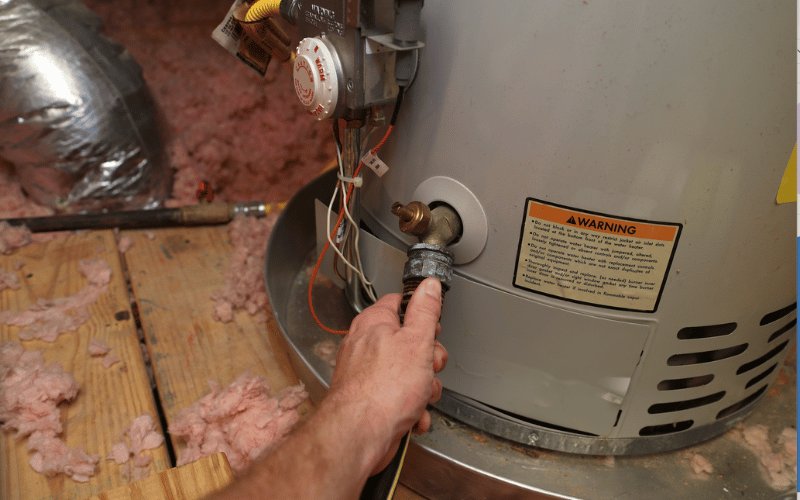Steps to Prolong the Life of Your Home's Hot Water System Through Maintenance
Steps to Prolong the Life of Your Home's Hot Water System Through Maintenance
Blog Article
The publisher is making a number of good annotation on the subject of Water Heater Maintenance Tips You Can't Afford to Forget as a whole in this post following next.

Hot water is crucial for everyday comfort, whether it's for a revitalizing shower or cleaning dishes. To guarantee your warm water system runs efficiently and lasts much longer, routine maintenance is vital. This short article gives functional pointers and understandings on how to preserve your home's warm water system to stay clear of disturbances and costly repairs.
Introduction
Maintaining your home's warm water system could appear difficult, but with a couple of easy actions, you can ensure it operates efficiently for several years to come. This overview covers every little thing from comprehending your hot water system to do it yourself upkeep ideas and understanding when to employ specialist aid.
Value of Keeping Your Warm Water System
Routine maintenance not only extends the lifespan of your hot water system but additionally guarantees it runs successfully. Ignoring upkeep can result in lowered performance, higher energy bills, and also early failure of the system.
Signs Your Warm Water System Requirements Maintenance
Knowing when your hot water system needs attention can prevent significant problems. Watch out for signs such as inconsistent water temperature, strange noises from the heater, or rusty water.
Understanding Your Hot Water System
Before diving into maintenance tasks, it's useful to understand the basic components of your hot water system. Typically, this consists of the hot water heater itself, pipelines, anode poles, and temperature controls.
Regular Monthly Maintenance Tasks
Regular monthly checks can help capture small concerns prior to they intensify.
Flushing the Water Heater
Flushing your hot water heater gets rid of debris accumulation, enhancing efficiency and prolonging its life.
Monitoring and Changing Anode Rods
Anode poles avoid corrosion inside the tank. Inspecting and changing them when worn is important.
Examining and Adjusting Temperature Level Setups
Readjusting the temperature level settings makes certain ideal performance and safety.
DIY Tips for Upkeep
You can execute several maintenance tasks on your own to keep your warm water system in top condition.
Checking for Leakages
Routinely inspect pipelines and connections for leakages, as these can cause water damage and greater bills.
Checking Stress Relief Valves
Checking the pressure relief valve ensures it works correctly and avoids extreme pressure build-up.
Insulating Pipes
Insulating warm water pipes minimizes warm loss and can conserve power.
When to Call a Professional
While do it yourself upkeep is beneficial, some problems call for specialist expertise.
Facility Concerns Requiring Specialist Assistance
Examples include major leakages, electrical issues, or if your water heater is continually underperforming.
Regular Specialist Upkeep Advantages
Professional maintenance can consist of extensive inspections, tune-ups, and ensuring conformity with security standards.
Conclusion
Normal maintenance of your home's hot water system is crucial for effectiveness, long life, and price savings. By following these tips and recognizing when to look for specialist assistance, you can guarantee a dependable supply of warm water without unforeseen disturbances.
How to Maintain an Instant Hot Water Heater
Before tinkering with your hot water heater, make sure that it’s not powered on. You also have to turn off the main circuit breaker and shut off the main gas line to prevent accidents. Also turn off the water valves connected to your unit to prevent water from flowing into and out of the appliance. 2. When you’re done, you have to detach the purge valves’ caps. These look like the letter “T†and are situated on either side of the water valves. Doing so will release any pressure that has accumulated inside the valves while at the same time avoid hot water from shooting out and burning your skin. 3. When the purge valves’ caps are removed, you have to connect your hosing lines to the valves. Your unit should have come with three hoses but if it didn’t, you can purchase these things from any hardware or home repair shops. You can also get them from retail stores that sell water heating systems. Read the user’s manual and follow it to complete this task properly. When the hosing lines are connected, open the purge port’s valves. 4. You should never use harsh chemical cleaners or solutions when cleaning your unit. Make use of white vinegar instead. It should be undiluted and you’ll probably use about 2 gallons. 5. Now flush your water heater. This task should probably take about 40 minutes. We can’t give you specific directions for this because the procedure is carried out depending on the type, model and brand of your heater. With that being said, refer to the user’s manual. 6. When you’re done draining the unit, you have to turn off the purge port valves again. Remove the hosing lines that you earlier installed on each of the water valves. Put the valve caps (purge port) back in their respective places and be very careful so as not to damage the rubber discs that are found inside these caps. 7. Now that everything’s back in place, check your user’s manual again to find out how to reactivate your water heating system. 8. Once it is working, turn one of your hot water faucets on just to let air pass through the heater’s water supply pipes. Leave the tap on until water flows smoothly out of it. https://www.orrplumbing.com/blog/2014/september/how-to-maintain-an-instant-hot-water-heater/

As a devoted person who reads on How to Maintain Your Water Heater & Prolong its Life, I think sharing that excerpt was important. Sharing is good. Helping people is fun. Thanks for your time. Don't hesitate to come by our site back soon.
Call Today Report this page